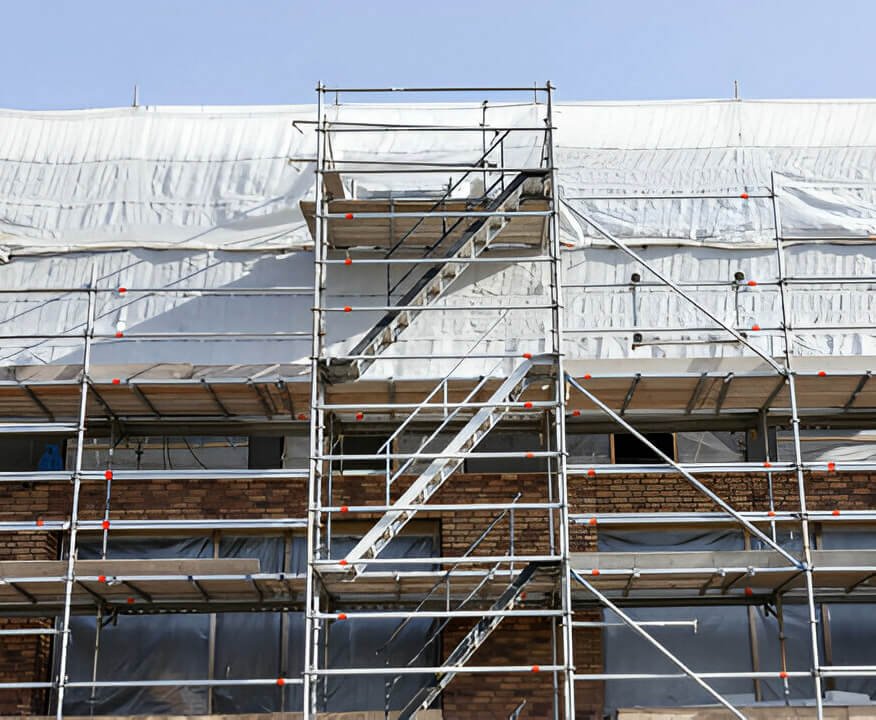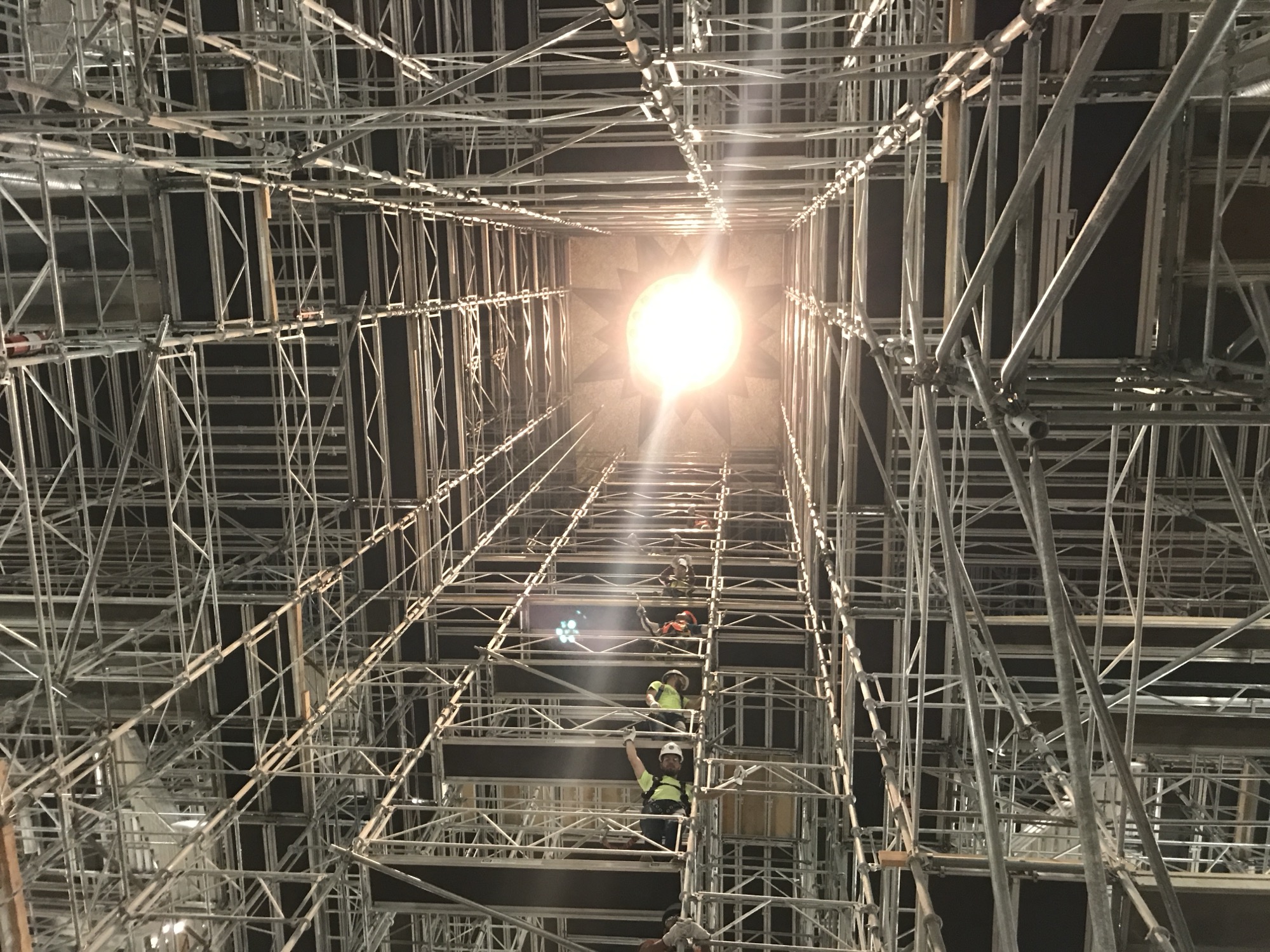A Comprehensive Guide to the Important Features of Scaffolding in Modern Building And Construction
The landscape of contemporary building increasingly depends on efficient scaffolding systems that focus on innovation, effectiveness, and safety. As jobs expand in complexity, recognizing the vital attributes of scaffolding becomes essential for guaranteeing employee security and maximizing job timelines. This guide checks out numerous kinds of scaffolding, highlights crucial safety functions, and checks out material developments that add to performance and sustainability. Nevertheless, the ramifications of these components extend much beyond mere building methods, motivating a closer check out just how they affect overall job success and employee health.
Kinds of Scaffolding
Although scaffolding systems can differ extensively in design and application, they usually fall under a number of distinct groups that cater to various building and construction needs - Scaffolding. One of the most usual types consist of sustained scaffolding, suspended scaffolding, and rolling scaffolding
Supported scaffolding includes systems supported by a structure of poles, which supply a elevated and steady working surface. This type is commonly made use of for tasks that call for considerable elevation, such as bricklaying or external painting.
Put on hold scaffolding, alternatively, is used for jobs calling for access to high elevations, such as cleaning or repairing building exteriors. This system hangs from a roof or an additional framework, permitting workers to lower or increase the platform as needed.
Moving scaffolding attributes wheels that permit very easy wheelchair across a task site. It is particularly beneficial for tasks that call for frequent moving, such as interior work in large rooms.
Each kind of scaffolding is developed with details applications in mind, ensuring that building projects can be carried out effectively and effectively. Understanding these classifications is crucial for selecting the appropriate scaffolding system to fulfill both job demands and website conditions.
Secret Safety Features
Safety and security is critical in scaffolding systems, as the possible dangers connected with operating at heights can result in major mishaps if not correctly taken care of. Key security functions are important to make certain the wellness of employees and the honesty of the building and construction site.
Firstly, guardrails are crucial. These barriers provide a physical safeguard versus drops, significantly reducing the threat of significant injuries. In addition, toe boards are frequently made use of to stop tools and products from diminishing the scaffold, protecting employees listed below.
One more crucial component is the usage of non-slip surface areas on platforms. This feature improves hold, especially in adverse weather, therefore lessening the possibility of drops and slides. Additionally, accessibility ladders should be safely placed to assist in safe entrance and departure from the scaffold.
Routine assessments and maintenance of scaffolding systems are additionally vital. These inspections ensure that all parts remain in excellent problem and functioning appropriately, dealing with any type of wear or damages without delay.
Last but not least, correct training for all employees entailed in scaffolding operations is important to guarantee that they comprehend safety procedures and can determine possible hazards. Scaffolding. Jointly, these functions develop a much safer working setting and substantially reduce risks related to scaffolding
Material Innovations
Innovations in material scientific research have actually considerably influenced the scaffolding industry, boosting both safety and security and performance in modern building and construction. The introduction of high-strength steel and aluminum alloys has changed conventional scaffolding systems. These materials are not just lighter, making them simpler to carry and put together, but additionally provide remarkable load-bearing capabilities. This results in scaffolding frameworks that can support higher weights while minimizing the threat of collapse.
In addition, innovative composite products, such as fiberglass-reinforced plastics, have actually become sensible alternatives. These materials are immune to rust and environmental degradation, therefore expanding the life-span of scaffolding systems, specifically in severe weather. Using such products adds to lower upkeep prices and makes sure constant performance gradually.


Layout Factors To Consider
Taking into consideration the intricacies of modern construction tasks, effective scaffolding layout is extremely important to making sure both capability and safety. Style factors to check out this site consider must incorporate numerous factors, including tons ability, height, and the specific needs of the building and construction site. Each project presents special obstacles, requiring an adaptable approach to scaffolding systems that can adapt to differing conditions.
Structural honesty is important; consequently, designers need to calculate the tons that the scaffolding will sustain, including employees, materials, and devices. The option of products plays a critical function in making certain the scaffolding can endure these loads while remaining resilient and lightweight. Furthermore, the layout should enable very easy gain access to and egress, helping with the smooth motion of employees and materials.
Security functions, such as guardrails and non-slip surfaces, need to be integrated to reduce dangers of accidents. The design should take into consideration the surrounding atmosphere, consisting of prospective hazards and adjacent frameworks. By attending to these style factors to consider, building firms can enhance the performance of scaffolding systems and promote a safer working setting, ultimately adding to the overall success of the project.
Maintenance and Evaluations
The performance of scaffolding systems prolongs beyond initial design and execution; continuous maintenance and normal assessments are vital to ensuring their proceeded performance and safety throughout the period of a job. Regular evaluations ought to be conducted by qualified employees to identify any kind of signs of wear, damages, or instability that can compromise the stability of the scaffolding.
Maintenance protocols need to include regular checks of architectural elements, her comment is here such as frameworks, slabs, and installations, guaranteeing that all components continue to be free and safe from corrosion or other damage. Furthermore, the functionality of security functions, such as guardrails and toe boards, have to be evaluated to make certain conformity with safety guidelines.
Documentation of all assessments and upkeep activities is important for responsibility and governing conformity. An organized strategy to record-keeping not just help in tracking the condition of the scaffolding but also scaffolding strategies provides needed proof in the occasion of an event.
Inevitably, developing a thorough upkeep and assessment timetable will dramatically lower the danger of mishaps and improve the general safety and security of the construction site. By focusing on these practices, building managers can secure workers and maintain the project's integrity.

Conclusion
In verdict, the vital attributes of scaffolding in contemporary building and construction include a series of crucial aspects, including varied kinds, crucial safety systems, material advancements, and thoughtful style factors to consider. Stressing security via guardrails and non-slip surface areas, along with improvements in products like high-strength steel, boosts both performance and sustainability. In addition, normal upkeep and assessments are important for ensuring architectural honesty and safety on building and construction sites, ultimately facilitating efficient project execution and promoting the wellness of workers.
The landscape of contemporary construction significantly relies on effective scaffolding systems that prioritize performance, security, and development.Innovations in product science have actually considerably affected the scaffolding sector, boosting both security and performance in contemporary building. In general, these material advancements not only boost the performance and safety of scaffolding systems but likewise line up with the industry's push towards sustainability, as lots of modern-day materials are made to be a lot more eco friendly.
Considering the complexities of modern-day construction tasks, effective scaffolding layout is vital to making certain both performance and safety.In conclusion, the essential features of scaffolding in contemporary building and construction incorporate a variety of essential aspects, consisting of diverse types, crucial security systems, material advancements, and thoughtful style considerations.